| View previous topic :: View next topic |
| Author |
Message |
hifisapi


Joined: 25 Sep 2012
Posts: 941
Location: USA
|
 Posted: Fri Jul 25, 2014 10:24 am Post subject: Posted: Fri Jul 25, 2014 10:24 am Post subject: |
 |
|
hifisapi wrote:
for a very short while I had a Vivitar Series 1 100-500 5.6-8 lens that was nothing special at all.
I promptly got rid of it.
_________________
===========
ACQUIRED OVER 30 YEARS:
Cameras: DSLR=Pentax istDS FILM=Pentax SP, SP-F, ESII, SP1000, KX, K2
Lenses : Pentax M42 = Super Multi Coated Takumars 50/1.4 55/1.8 100/4-BELLOWS 500/4.5 1000/8 135-600/6.7 Pentax PK= SMC Pentax-Ks K17/4-FF Fisheye K18/3.5 K20/4 K24/3.5 K28/3.5 K28/2 K35/3.5 K35/2 K50/1.2 K50/1.4K 50/4-MACROK 55/1.8 K85/1.8 K100/4-MACRO K100/4-BELLOWS K105/2.8 K120/2.8 K135/3.5 K135/2.5 K150/4 K200/4 K400/5.6 K45-125/4K 85-210/4.5 Pentax PKM = SMC Pentax-M M40/2.8-Pancake M50/1.4 M75-150/4 M80-200/4.5 Pentax PKA= SMC Pentax-A A15/3.5 A50/2.8-MACRO A28/2 A35/2 A50/1.4 A135/2.8 A200/4 A*300/4 A35-105/3.5 A24-50/4 A70-210/4 TAMRON AD2= SP80-200/2.8 SP180/2.5 TOKINA AT-X PK= ATX28-85/3.5-4.5 ATX35-70/2.8 ATX60-120/2.8 ATX80-200/2.8 ATX100-300/4 ATX90/2.5 MACRO KIRON-LESTER DINE PK = 105/2.8-MACRO VIVITAR PK = 135/2.8-MACRO 28-85/4 NOFLEXAR AUTOBELLOWS PK = 60/4 105/4 |
|
| Back to top |
|
 |
woodrim


Joined: 14 Jan 2010
Posts: 4060
Location: Charleston
|
 Posted: Fri Jul 25, 2014 2:17 pm Post subject: Posted: Fri Jul 25, 2014 2:17 pm Post subject: |
 |
|
woodrim wrote:
Thanks to all for the comments.
It was helpful for me to go back and read the post title again. I first read it as Series 1 lenses, but now see that it is for all Vivitar lenses. I've already spoken about the 28mm Close Focus models. Now I'll mention my other experiences, although only two. My first Vivitar lens, and one I still have, was a 3.5/200 Komine which I purchased in the early to mid-'70s. Although at the time I had no other lens for comparison, it served me well throughout the film years - or I should say, decades. It is a good lens, but not up to the S1 3/200. My only other experience is a 2.8/135 Komine which I thought was quite good, but having the S1 2.3/135 and Tair-11, it did not get much use. I sold it to a friend.
_________________
Regards,
Woodrim |
|
| Back to top |
|
 |
SonicScot


Joined: 01 Dec 2011
Posts: 2697
Location: Scottish Highlands
|
 Posted: Fri Jul 25, 2014 3:31 pm Post subject: Posted: Fri Jul 25, 2014 3:31 pm Post subject: |
 |
|
SonicScot wrote:
I used to have the Vivitar 90/2.8 and it's little brother, the 55/2.8. Both macro lenses and both surprisingly good performers, worth every penny.
Then one day I got lucky, real lucky. I came across a Vivitar Series 1 90/2.5 at a knock-down price and my appreciation of lenses changed forever. This lens, the famed Bokina, would be the first thing I grabbed if my house was on fire. Next would be the Series 1 135/2.3, followed shortly by the Series 1 70-210/3.5 (Kiron version). Those lenses are just superb and I wouldn't part with any of them, not a chance.
I also have the Series 1 200/3, another excellent lens although I find it a tiny bit behind the others mentioned (could be my copy though).
I have plans to soon get my dirty paws on the Series 1 90-180/4.5 Flat Field macro. If what I've read is true, I expect it will join the ranks of 'things I'll grab first in a house fire'.
These are my most used lenses, I absolutely love them.
As mentioned, some can suffer from big dollops of purple CA, doesn't matter, these days it can be eradicated with one click.
I agree with everything Woodrim said, which is no surprise to some. It's no secret that we are Series 1 bro's, yo.  
_________________
Gary
Currently active gear....
Sony a7
E-M1 Mkll
Rubinar 1000/10 + 2x matched extender
Tamron 500/8 55BB
Sigma 100-300/4
Vivitar Series 1.... 200/3, 70-210/3.5 (V1 by Kiron), 135/2.3, 105/2.5 macro, 90/2.5 macro (Bokina), 90-180/4.5 Flat Field Macro, 28-90mm f/2.8-3.5
Carl Zeiss.... 180/2.8, 135/3.5, 85/1.4, 35/2.4 Flektagon, 21/2.8 Distagon
Nikon.... 55/3.5 micro, 50/1.2
Elicar 90/2.5 V-HQ Macro
Zhongyi Speedmaster 85/1.2
Jupiter-9 85/2
Helios.... 58/2 44-3
Hartblei 45/3.5 Super-Rotator TS-PC
Zenitar 16/2.8 fisheye
Samyang 8/3.5 fisheye
Nodal Ninja 4, Neewer leveling tripod base
Flickr http://www.flickr.com/photos/gazsus/ Website http://garianphotography.co.uk/ |
|
| Back to top |
|
 |
eno789

Joined: 27 Aug 2010
Posts: 159
Location: California
|
 Posted: Fri Jul 25, 2014 6:07 pm Post subject: Posted: Fri Jul 25, 2014 6:07 pm Post subject: |
 |
|
eno789 wrote:
Out of the non-S1 Vivitar lenses, another stand out is the 135mm f/2.8 Close Focusing, it is Komine made, with 62mm filter thread, and no built in hood.
Some California wildflower (Douglas Irises, Yellow Flag Iris, Daisy, Indian Warriors) pictures taken with the 135mm close focusing






_________________
Sharpness from lenses; Softness from me.
Nikon DSLR, Sony Mirrorless, Panasonic mu-4/3 - Having fun with MF lenses
https://www.flickr.com/groups/painterly_bokeh |
|
| Back to top |
|
 |
woodrim


Joined: 14 Jan 2010
Posts: 4060
Location: Charleston
|
 Posted: Fri Jul 25, 2014 7:00 pm Post subject: Posted: Fri Jul 25, 2014 7:00 pm Post subject: |
 |
|
woodrim wrote:
| eno789 wrote: |
Out of the non-S1 Vivitar lenses, another stand out is the 135mm f/2.8 Close Focusing, it is Komine made, with 62mm filter thread, and no built in hood.
|
I forgot to mention this one. Although I own one, I have never used it because I took the mount off and couldn't get it back on. It has a good reputation, so I should send this to Marc Jensen to get put back together.
_________________
Regards,
Woodrim |
|
| Back to top |
|
 |
f8orbust
Joined: 29 Mar 2010
Posts: 23
Location: Blackheath, London, UK
|
 Posted: Fri Jul 25, 2014 10:00 pm Post subject: Posted: Fri Jul 25, 2014 10:00 pm Post subject: |
 |
|
f8orbust wrote:
Another vote for the 135 2.8 Close Focus. I use it as my main lens for both near and distant photography.
And the S1's (28-90-Komine and 28-105 Cosina) fill in the gaps where I need shorter focal lengths.
All three highly recommended
Phil P |
|
| Back to top |
|
 |
woodrim


Joined: 14 Jan 2010
Posts: 4060
Location: Charleston
|
 Posted: Sun Aug 03, 2014 1:41 am Post subject: Posted: Sun Aug 03, 2014 1:41 am Post subject: |
 |
|
woodrim wrote:
For anyone interested, I have posted pictures from my Series 1 2.3/135 here:
http://forum.mflenses.com/viewtopic,p,1400243.html#1400243
_________________
Regards,
Woodrim |
|
| Back to top |
|
 |
drjs


Joined: 25 Feb 2013
Posts: 484
Location: USA
|
 Posted: Tue Aug 05, 2014 3:25 am Post subject: Posted: Tue Aug 05, 2014 3:25 am Post subject: |
 |
|
drjs wrote:
Vote number 4 for Vivitar 135 2.8 close focusing. It is difficult to find but well worth the effort.
_________________
Follow me on 500px |
|
| Back to top |
|
 |
SonicScot


Joined: 01 Dec 2011
Posts: 2697
Location: Scottish Highlands
|
 Posted: Tue Aug 05, 2014 10:30 am Post subject: Posted: Tue Aug 05, 2014 10:30 am Post subject: |
 |
|
SonicScot wrote:
| drjs wrote: |
| Vote number 4 for Vivitar 135 2.8 close focusing. It is difficult to find but well worth the effort. |
Does anyone know how close the close focusing is? I just wondered how it compares to the Series 1 135/2.3 which is no slouch in the mfd department.
_________________
Gary
Currently active gear....
Sony a7
E-M1 Mkll
Rubinar 1000/10 + 2x matched extender
Tamron 500/8 55BB
Sigma 100-300/4
Vivitar Series 1.... 200/3, 70-210/3.5 (V1 by Kiron), 135/2.3, 105/2.5 macro, 90/2.5 macro (Bokina), 90-180/4.5 Flat Field Macro, 28-90mm f/2.8-3.5
Carl Zeiss.... 180/2.8, 135/3.5, 85/1.4, 35/2.4 Flektagon, 21/2.8 Distagon
Nikon.... 55/3.5 micro, 50/1.2
Elicar 90/2.5 V-HQ Macro
Zhongyi Speedmaster 85/1.2
Jupiter-9 85/2
Helios.... 58/2 44-3
Hartblei 45/3.5 Super-Rotator TS-PC
Zenitar 16/2.8 fisheye
Samyang 8/3.5 fisheye
Nodal Ninja 4, Neewer leveling tripod base
Flickr http://www.flickr.com/photos/gazsus/ Website http://garianphotography.co.uk/ |
|
| Back to top |
|
 |
Oldhand


Joined: 01 Apr 2013
Posts: 6005
Location: Mid North Coast NSW - Australia
|
 Posted: Tue Aug 05, 2014 11:06 am Post subject: Posted: Tue Aug 05, 2014 11:06 am Post subject: |
 |
|
Oldhand wrote:
| SonicScot wrote: |
| drjs wrote: |
| Vote number 4 for Vivitar 135 2.8 close focusing. It is difficult to find but well worth the effort. |
Does anyone know how close the close focusing is? I just wondered how it compares to the Series 1 135/2.3 which is no slouch in the mfd department. |
Reputedly it focuses down to 20 inches and the Vivitar 2.3/135 goes down to 0.9metres or just under 3 feet.
OH |
|
| Back to top |
|
 |
texsport

Joined: 12 Feb 2013
Posts: 53
|
 Posted: Tue Aug 05, 2014 11:33 am Post subject: Posted: Tue Aug 05, 2014 11:33 am Post subject: |
 |
|
texsport wrote:
| woodrim wrote: |
Anyone that has paid attention would know that I am a fan of Series 1 lenses, although I do not have as many as others here. Since I do not have a single manual zoom in my collection of lenses, I can only comment on the primes, but not likely to say anything I have not said before. I have 2.5/90, 2.3/135, and 3/200. While the 2/28 and 2.8/28 Close Focus lenses by Komine are not labeled as Series 1, I think they easily could have been. I have them both.
A few words about the blue/purple fringing. I only see minimal CA from the 90mm and only in the extremes where it would be expected. The 135mm and 200mm do suffer from it, but I found a remarkable difference when I upgraded my camera to the NEX-5N. In many cases I no longer experience CA and when I do, it is much less apparent than with the older sensor of my Sony A200. I also find it easily corrected, so it became a non issue with me, especially given the overall image quality of the lenses.
The 2.5/90 will get my vote for the best of the three I have. It seems insanely sharp and is quite so even at f/2.5. I rarely use it with the 1:1 optical adapter, probably because I rarely do macro photography. I do appreciate its standard macro mode and use it for close up photography. Whether shooting close or far, the lens performs wonderfully. The build quality is extraordinary.
The 2.3/135 is also very sharp from wide open, although you better have good focusing skills with such a narrow depth of field. Focusing is quite close for a lens of this focal length, which makes it very useful for flowers and butterflies. Again, the build quality is excellent.
The 3/200 was the first one I purchased. I was initially struck by the blue fringing and I was equally disappointed with the wide open performance. I had a hard time hitting the focus perfectly until I had plenty of practice. With that practice came much better results, including less CA, but the wide open performance was still lacking. I found that I could only get acceptable wide open results in subdued lighting. I should mention that this was all with my older A200. When I started using the NEX-5N there was a remarkable difference; even more so than with the 135mm. With the change of sensor, suddenly wide open pictures were crisp in any lighting. It was revealing just how much difference was made by the camera. The 200mm has been my most used of the three lenses and the lens that has produced the largest number of favorite shots. Granted, much of the photography that I do - for instance, sea birds - requires the longer focal length. I rate the lens very good with sharpness and bokeh, has close minimum focus, and like the others, it is built very well.
Should I stumble upon any of the other S1 primes at good prices, I won't hesitate to buy. I may even be tempted to purchase the 3rd version, Komine 70-210 zoom.
I will offer pictures from the three lenses, all at wide open. Maybe some I have not already shared.
S1 2.5/90


S1 2.3/135


S1 3/200



 |
Here's a link to an old Ralph M article about lens variations (scroll down a little). He claimed that the Vivitar 200/3.5 TX was actually the sharpest wide open, degrading in quality as the lens is opened!
http://web.archive.org/web/20021101170822/http://medfmt.8k.com/third/variations.html
Last edited by texsport on Tue Aug 05, 2014 2:26 pm; edited 1 time in total |
|
| Back to top |
|
 |
drjs


Joined: 25 Feb 2013
Posts: 484
Location: USA
|
 Posted: Tue Aug 05, 2014 1:44 pm Post subject: Posted: Tue Aug 05, 2014 1:44 pm Post subject: |
 |
|
drjs wrote:
| Oldhand wrote: |
| SonicScot wrote: |
| drjs wrote: |
| Vote number 4 for Vivitar 135 2.8 close focusing. It is difficult to find but well worth the effort. |
Does anyone know how close the close focusing is? I just wondered how it compares to the Series 1 135/2.3 which is no slouch in the mfd department. |
Reputedly it focuses down to 20 inches and the Vivitar 2.3/135 goes down to 0.9metres or just under 3 feet.
OH |
I read somewhere there is also a close focusing version of the 135 2.3 (Series 1). But it is like Jimmy Hoffa's body, hasn't been able to locate it anywhere.
_________________
Follow me on 500px |
|
| Back to top |
|
 |
woodrim


Joined: 14 Jan 2010
Posts: 4060
Location: Charleston
|
 Posted: Wed Aug 06, 2014 12:23 am Post subject: Posted: Wed Aug 06, 2014 12:23 am Post subject: |
 |
|
woodrim wrote:
| drjs wrote: |
I read somewhere there is also a close focusing version of the 135 2.3 (Series 1). But it is like Jimmy Hoffa's body, hasn't been able to locate it anywhere. |
I have never seen that, but I have seen where some people have referred to the 2.8/135 Close Focus as a Series 1, believing that it should have been.
_________________
Regards,
Woodrim |
|
| Back to top |
|
 |
martinsmith99


Joined: 31 Aug 2008
Posts: 6950
Location: S Glos, UK
Expire: 2013-11-18
|
 Posted: Wed Aug 06, 2014 7:22 pm Post subject: Posted: Wed Aug 06, 2014 7:22 pm Post subject: |
 |
|
martinsmith99 wrote:
I had the 70-210 Kiron lens until I bought the Komine version which I found to be a bit better. The 28-90 is a great walk around zoom as is the 35-85 as long as you don't mind/avoid the weird bokeh wide open at the wide end; it's really good from F4.
_________________
Casual attendance these days |
|
| Back to top |
|
 |
stevemark

Joined: 29 Apr 2011
Posts: 4068
Location: Switzerland
|
 Posted: Sun Dec 31, 2023 8:56 pm Post subject: Posted: Sun Dec 31, 2023 8:56 pm Post subject: |
 |
|
stevemark wrote:
Here are three of the most iconic Series 1 Zoom / Varifocal lenses:
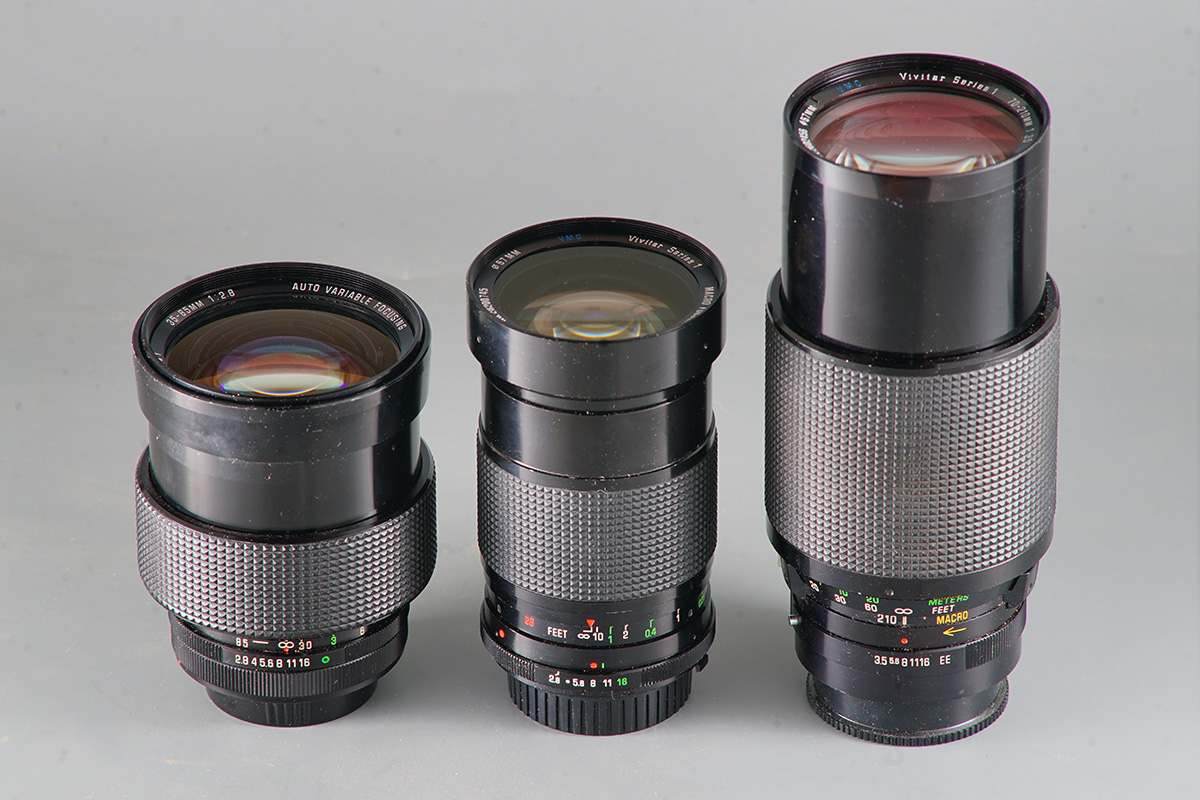
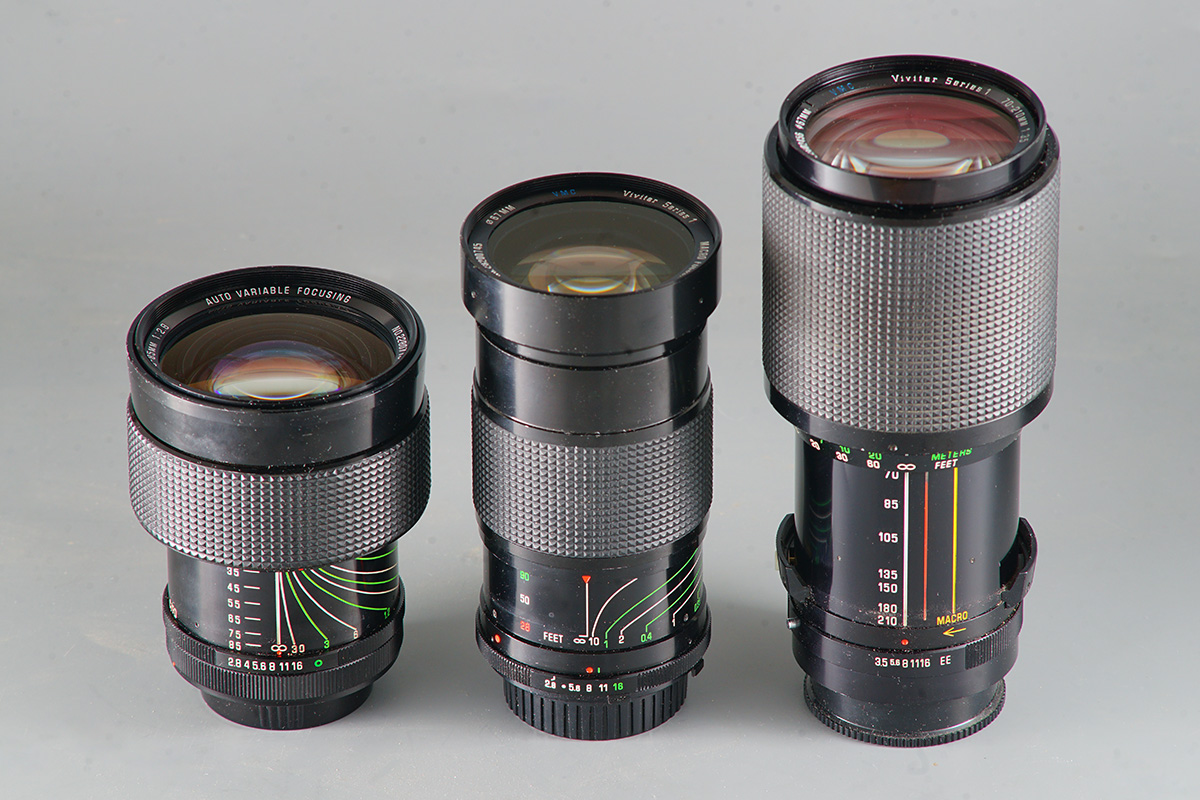
Left: Vivitar Series 1 VMC 2.8/35-85mm Varifocal (Kiron)
Middle: Vivitar Series 1 VMC 2.8-3.5/28-90mm (Komine)
Right: Vivitar Series 1 VMC 3.5/70-210mm (Kiron)
While nowadays the performance of these lenses may not be overwhelming, they were rather remarkable lenses when they hit the market around 1974 (2.8/35-80 and 3.5/70-210) or 1983 (2.8-3.5/28-90). Especially the 2.8/35-85mm has lots of "character", and it changes from from "soft but lots of detail" to "sharp from corner to corner" when going from f2.8 to f11.
I got my first sample of the Kiron Vivitar Series 1 VMC 3.5/70-210mm many years ago, but apart from test images I never have been really using it - which is a pity since the lens is very well made and feels rock solid. However my samples all either are slightly fogged or suffer badly from fungus, and up to now I was too lazy to overhaul them ...
The Series 1 VMC 2.8-3.5/28-90mm came nearly two years ago, and that one too didn't see much real world use, sadly. This one is a Komine made lens, and it feels slightly less robust than the earlier Kiron made lenses. Nevertheless the barrel is a joy to use (and to look at).
Finally the Series 1 VMC 2.8/35-85mm which I got yesterday from a local photo store! It is a pretty large and heavy fast normal zoom (well: a varifocal lens, to be precise) which reminds me to some extent of the Konica AR 2.8/35-100mm varifocal behemoth. The Vivitar 2.8/35-80mm, according to contemporary advertising, had its optics developped by American engineers, its mechanical construction was Japanese, and machining was done using German and Swiss machines, especially designed for that purpose:
"The mechanical motion of these three (zoom) groups is controlled by cams milled into sleeves. In order to achieve the extremely close tolerances specified by the Japanese mechanical engineers, the cams had to be machined on specially made, numerically controlled lathes designed and built in Germany and Switzerland".
Pretty interesting stuff 
S
_________________
www.artaphot.ch |
|
| Back to top |
|
 |
ZuikosHexanonsandVivitars


Joined: 03 Nov 2021
Posts: 250
Location: Austria
|
 Posted: Thu Jan 04, 2024 7:48 am Post subject: Posted: Thu Jan 04, 2024 7:48 am Post subject: |
 |
|
ZuikosHexanonsandVivitars wrote:
| stevemark wrote: |
"The mechanical motion of these three (zoom) groups is controlled by cams milled into sleeves. In order to achieve the extremely close tolerances specified by the Japanese mechanical engineers, the cams had to be machined on specially made, numerically controlled lathes designed and built in Germany and Switzerland".
Pretty interesting stuff 
S |
Yes, indeed. Stephan, where´s that piece of text from? This looks like an interesting read, and I´d be glad and thankful if you could share the source.
_________________
Cheers, Gerhard |
|
| Back to top |
|
 |
caspert79


Joined: 31 Oct 2010
Posts: 3217
Location: The Netherlands
|
 Posted: Thu Jan 04, 2024 9:07 am Post subject: Posted: Thu Jan 04, 2024 9:07 am Post subject: |
 |
|
caspert79 wrote:
Well, I had the 35-85/2.8 in the past, and it surely feels like like a piece of top notch engineering. It has 'the looks' as well. The images turned out to be a bit underwelming in general, but I often shoot @ wider apertures to blow out the backgrounds a bit. The lens performs probably better in the landscape department.
By the way, I've seen some pretty darn good images made with the 90-180mm flat field Vivitar. Must be a real fun lens to play around with.
_________________
For Sale:
Steinheil Auto D Tele Quinar 135mm f/2.8 (Exa)
ISCO Isconar 100mm f/4 (Exa)
Steinheil Cassarit 50mm f/2.8 M39 (Paxette)
I'm always interested in trading lenses! |
|
| Back to top |
|
 |
stevemark

Joined: 29 Apr 2011
Posts: 4068
Location: Switzerland
|
 Posted: Thu Jan 04, 2024 11:14 am Post subject: Posted: Thu Jan 04, 2024 11:14 am Post subject: |
 |
|
stevemark wrote:
[quote="ZuikosHexanonsandVivitars"]
| stevemark wrote: |
Yes, indeed. Stephan, where´s that piece of text from? This looks like an interesting read, and I´d be glad and thankful if you could share the source. |
Here. Not my own scan, downloaded from somewhere in the internet for my own private use, but probably fair to share ?!?
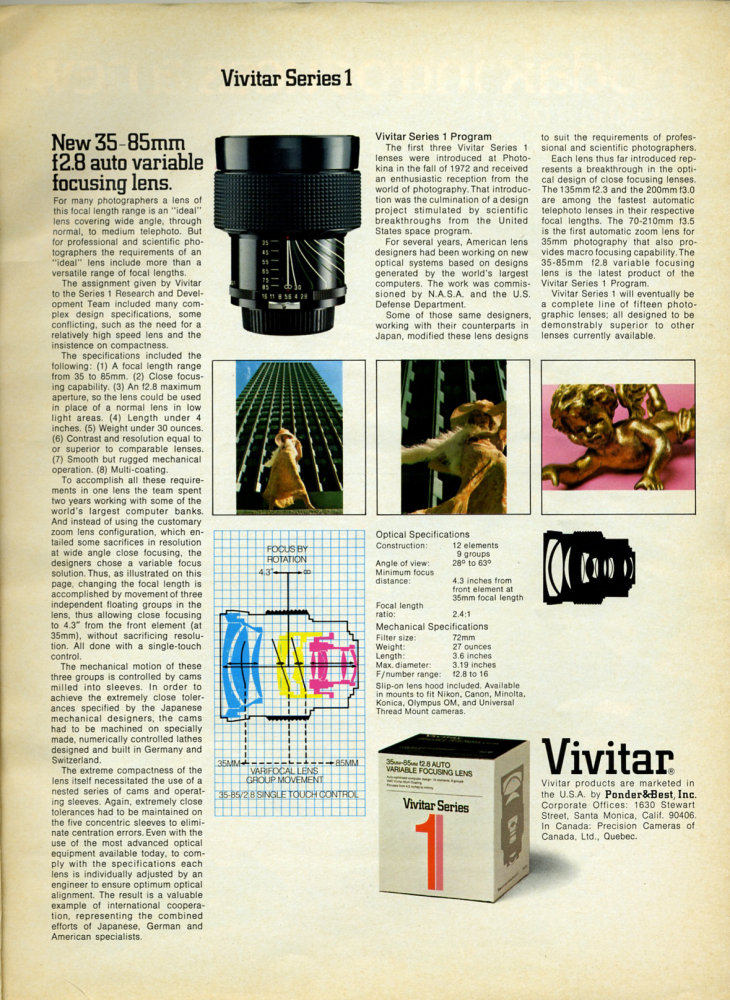
S
EDIT: compairing this Vivitar S1 2.8/35-80mm with a modern 2.8/24-70mm certainly isn't fair, but when you look at images taken with the Tamron 2.8-3.5/35-70mm shown below (which is from the same time frame) it's clear that the Vivitar was a big step forwards:
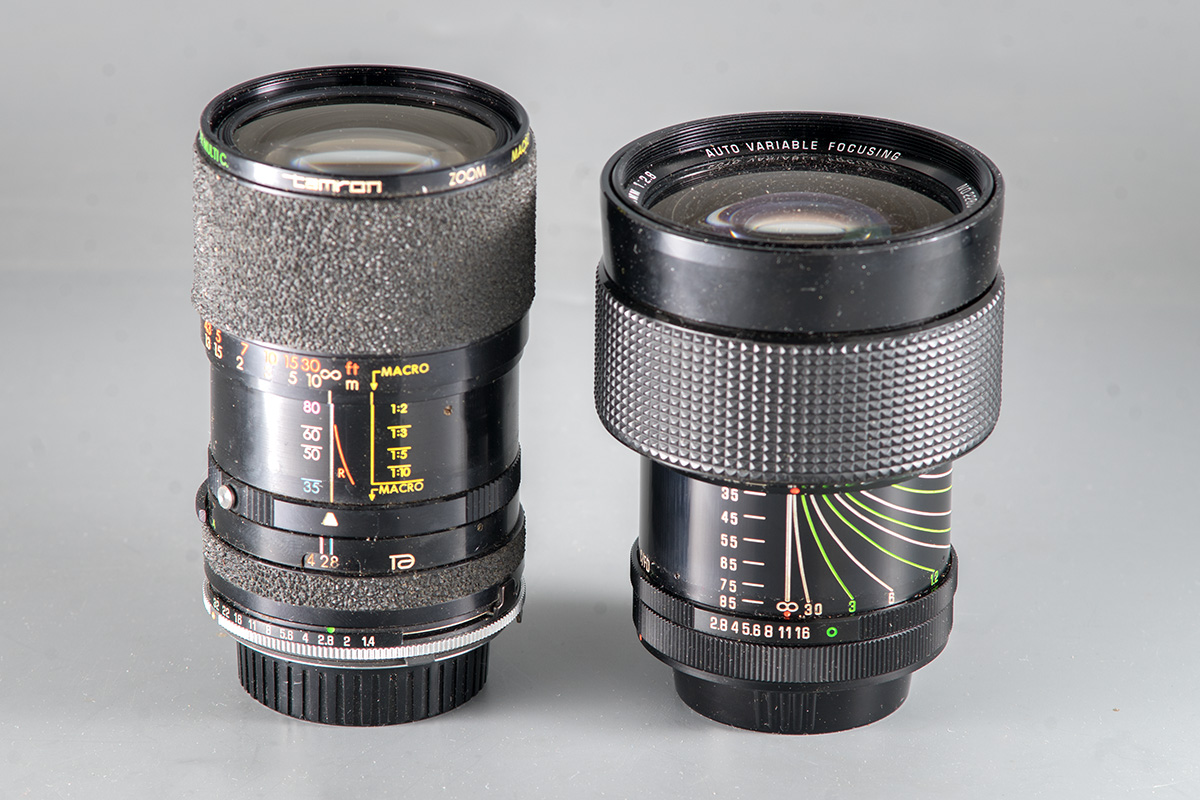
S
_________________
www.artaphot.ch |
|
| Back to top |
|
 |
D1N0


Joined: 07 Aug 2012
Posts: 2536
|
 Posted: Thu Jan 04, 2024 2:01 pm Post subject: Posted: Thu Jan 04, 2024 2:01 pm Post subject: |
 |
|
D1N0 wrote:
Tamron also learned because the Tamron SP Adaptall-2 35-80mm 1:2.8-3.8 CF Macro BBAR MC 01A is great.
_________________
pentaxian |
|
| Back to top |
|
 |
stevemark

Joined: 29 Apr 2011
Posts: 4068
Location: Switzerland
|
 Posted: Thu Jan 04, 2024 2:22 pm Post subject: Posted: Thu Jan 04, 2024 2:22 pm Post subject: |
 |
|
stevemark wrote:
| D1N0 wrote: |
| Tamron also learned because the Tamron SP Adaptall-2 35-80mm 1:2.8-3.8 CF Macro BBAR MC 01A is great. |
Sure. But that one was five years later (so probably development began after they'd tested the Vivitar), AND heavily based on the Canon FD 2.8-3.5/35-70mm! As we all know the Canon design philosophy (a two group zoom formulated along the lines of an "ordinary" retrofocus wideangle and copied by EVERYONE) would prevail, and the Konica/Vivitar varifocal designs would disappear. In the early 1990s Minolta tried to resurrect the varifocal principle with their "xi" series of zooms (using the AF motors for re-focusing while zooming), but that attempt failed as well.
S
_________________
www.artaphot.ch |
|
| Back to top |
|
 |
RokkorDoctor


Joined: 27 Nov 2021
Posts: 1428
Location: Kent, UK
Expire: 2025-05-01
|
 Posted: Thu Jan 04, 2024 8:22 pm Post subject: Posted: Thu Jan 04, 2024 8:22 pm Post subject: |
 |
|
RokkorDoctor wrote:
| stevemark wrote: |
The Vivitar 2.8/35-80mm, according to contemporary advertising, had its optics developped by American engineers, its mechanical construction was Japanese, and machining was done using German and Swiss machines, especially designed for that purpose:
"The mechanical motion of these three (zoom) groups is controlled by cams milled into sleeves. In order to achieve the extremely close tolerances specified by the Japanese mechanical engineers, the cams had to be machined on specially made, numerically controlled lathes designed and built in Germany and Switzerland".
Pretty interesting stuff 
S |
Indeed cams for zooms are precision machined features. The cams consist of two components: the cam slots and the cam followers. Each cam follower usually engages the slots milled in two different zoom sleeves, such that relative rotational movement of those two sleeves moves the cam followers back and forth, different for each zoom group.
The cam slots are milled into the zoom sleeve(s) on either a numerically controlled lathe or milling machine as stated in the article. Precision is critical here as the sets of slots for each zoom group need to be milled to the exact same curves, or otherwise the zoom group cradle will tilt and jam.
The cam followers are precision machined round sleeves that slot into the cam slots. These are usually manufactured in a small range of diameters only a few micrometers apart, and in the factory the best fitting ones are matched to the machined cam slots; you want as little play as possible but without any binding. This is why it is important when working on zoom lenses that during reassembly each cam follower is matched to the exact same slot(s) it came out of.
The following TAMRON article shows the different components of a typical zoom (for a drawing of the cams scroll to the bottom of the article):
http://www.adaptall-2.com/articles/InsideZoomLens/InsideZoomLens.html
_________________
Mark
SONY A7S, A7RII + dust-sealed modded Novoflex/Fotodiox/Rayqual MD-NEX adapters
Minolta SR-1, SRT-101/303, XD7/XD11, XGM, X700
Bronica SQAi
Ricoh GX100
Minolta majority of all Rokkor SR/AR/MC/MD models made
Sigma 14mm/3.5 for SR mount
Tamron SP 60B 300mm/2.8 (Adaptall)
Samyang T-S 24mm/3.5 (Nikon mount, DIY converted to SR mount)
Schneider-Kreuznach PC-Super-Angulon 28mm/2.8 (SR mount)
Bronica PS 35/40/50/65/80/110/135/150/180/200/250mm |
|
| Back to top |
|
 |
LittleAlex


Joined: 27 Nov 2008
Posts: 1748
Location: L'vov (Western Ukraine)
|
 Posted: Thu Jan 04, 2024 9:55 pm Post subject: Posted: Thu Jan 04, 2024 9:55 pm Post subject: |
 |
|
LittleAlex wrote:
I really value the Vivitar Series 1 200mm f/3 (made by Komine).
It fits very much for the soft-image portraiture when it is wide open.

_________________
"Sharpness is a bourgeois concept" - © H. Cartier Bresson |
|
| Back to top |
|
 |
Oldhand


Joined: 01 Apr 2013
Posts: 6005
Location: Mid North Coast NSW - Australia
|
 Posted: Thu Jan 04, 2024 10:16 pm Post subject: Posted: Thu Jan 04, 2024 10:16 pm Post subject: |
 |
|
Oldhand wrote:
It is nearly ten years since I made this original post.
In that time, I've had and used quite a few S1 Vivitars
If I had to keep only one it would be the 28-90 by Komine.
I have taken some of my best shots with it.
Here is a selection:
https://www.behance.net/gallery/186417995/Wetlands-of-the-Biripi-People
Tom |
|
| Back to top |
|
 |
Alsatian2017

Joined: 05 Mar 2018
Posts: 243
|
 Posted: Fri Jan 05, 2024 9:54 am Post subject: Posted: Fri Jan 05, 2024 9:54 am Post subject: |
 |
|
Alsatian2017 wrote:
| caspert79 wrote: |
By the way, I've seen some pretty darn good images made with the 90-180mm flat field Vivitar. Must be a real fun lens to play around with. |
Unfortunately, I own far too many macro lenses. Thus, my Vivitar 90-180 mm f/4.5 Flat-Field Zoom doesn't see that much action.

My sample with Minolta SR Mount
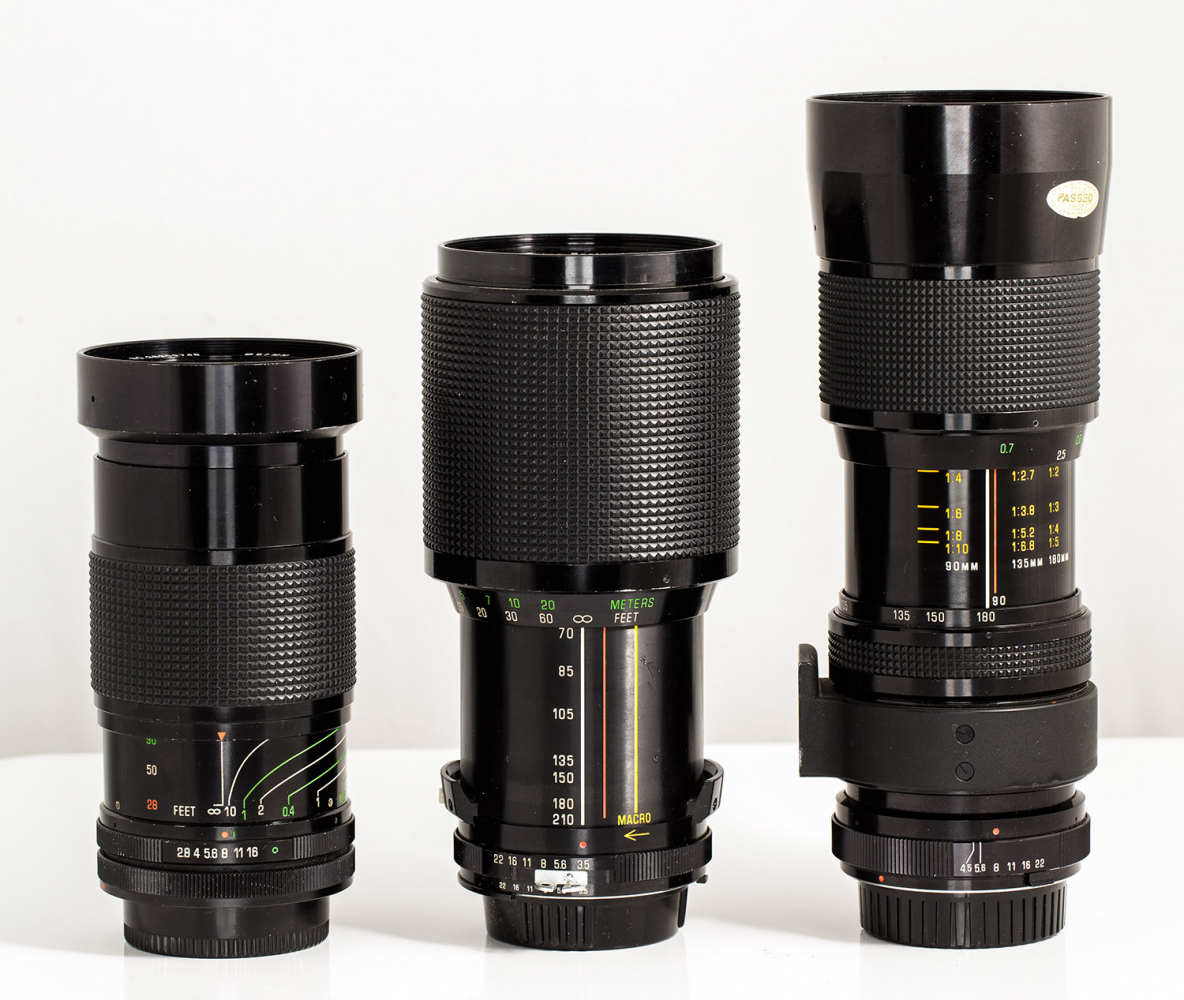
From left to right : The 28-90 mm f/2.8-3.5 made by Komine, the 70-210 mm f/3.5 and the 90-180 mm f/4.5 both made by Kino.
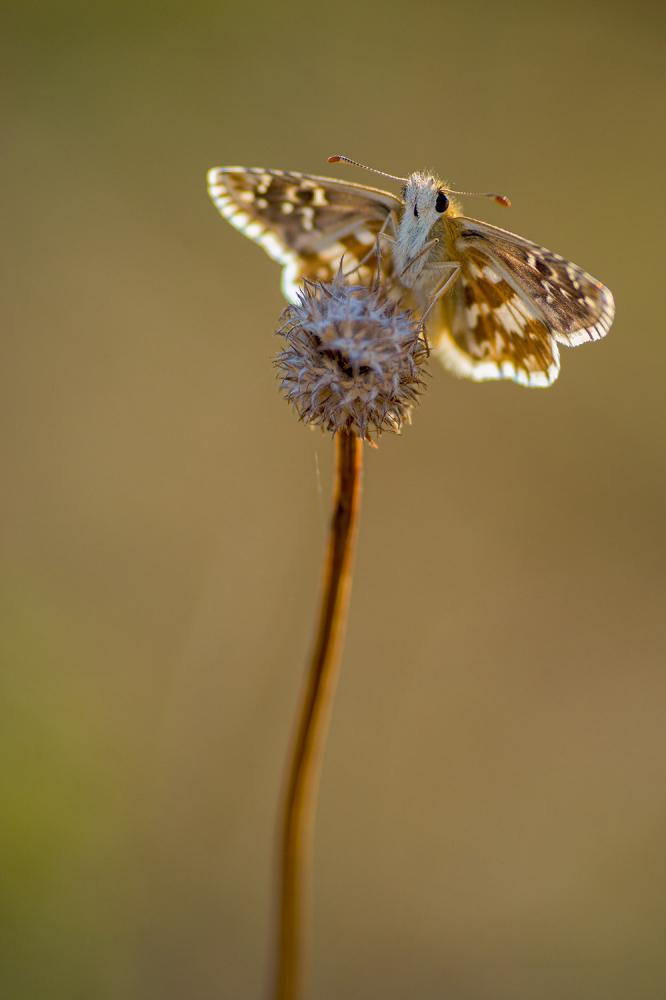




Even though, the sharpness wide open is not up to that of my longer fixed focal length macro lenses, the back-and foreground blur is very smooth for a zoom lens.
_________________
Personal website : https://volkergilbertphoto.com
Classic lenses : https://volkergilbertphoto.com/objektive/
Instagram : https://www.instagram.com/volker.gilbert/ |
|
| Back to top |
|
 |
BrianSVP


Joined: 09 Jun 2023
Posts: 354
Location: Philadelphia
|
 Posted: Fri Jan 05, 2024 2:54 pm Post subject: Posted: Fri Jan 05, 2024 2:54 pm Post subject: |
 |
|
BrianSVP wrote:
Lovely set from a fun lens. I always found the handling a little odd, but it never failed to deliver nice shots. What are your thoughts on the handling?
| Alsatian2017 wrote: |
| caspert79 wrote: |
By the way, I've seen some pretty darn good images made with the 90-180mm flat field Vivitar. Must be a real fun lens to play around with. |
Unfortunately, I own far too many macro lenses. Thus, my Vivitar 90-180 mm f/4.5 Flat-Field Zoom doesn't see that much action.

My sample with Minolta SR Mount

From left to right : The 28-90 mm f/2.8-3.5 made by Komine, the 70-210 mm f/3.5 and the 90-180 mm f/4.5 both made by Kino.





Even though, the sharpness wide open is not up to that of my longer fixed focal length macro lenses, the back-and foreground blur is very smooth for a zoom lens. |
|
|
| Back to top |
|
 |
|
|
